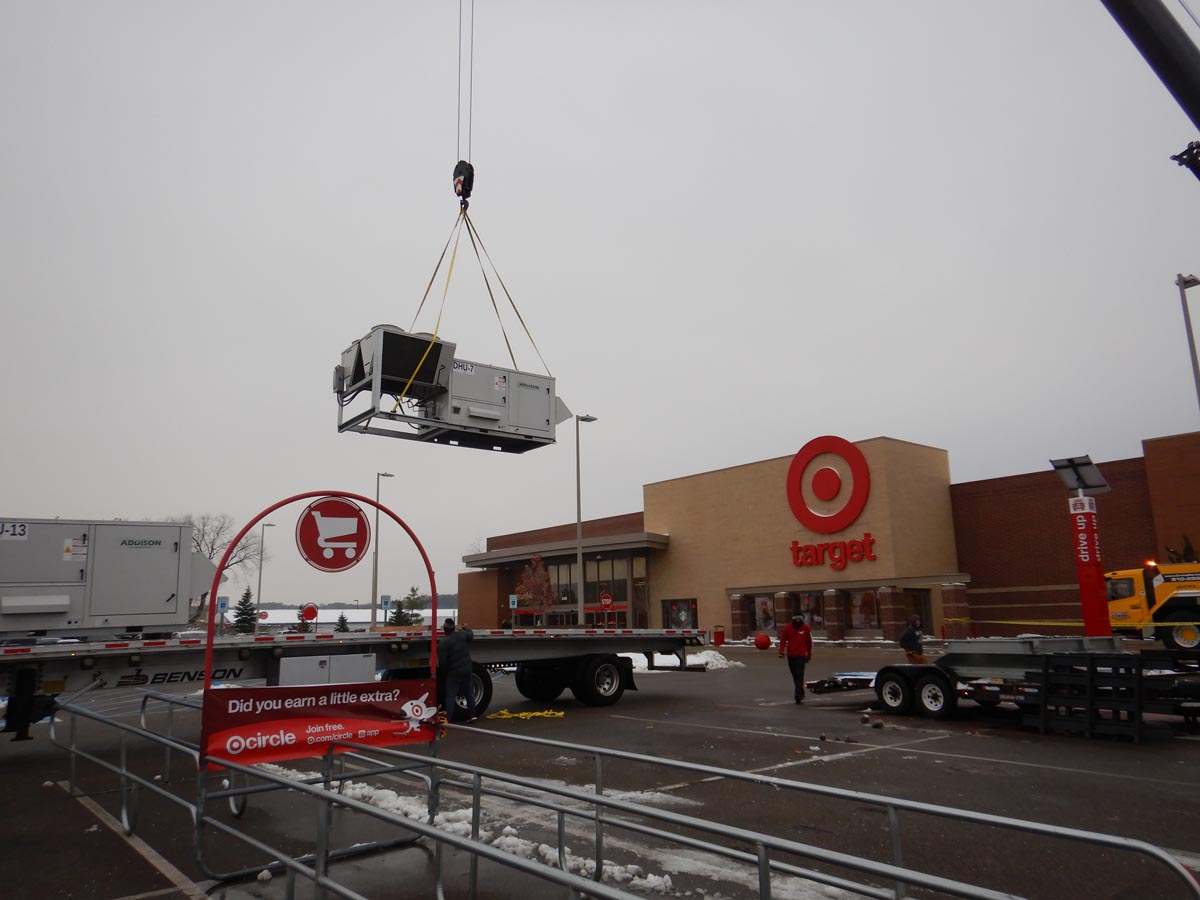We all know where to go if you need to lift a heavy load on your job site – your local crane rental company, of course. But how much weight can a crane lift exactly?
The answer isn’t straightforward. It all depends on the type and model of the crane in question and the nature of the job.

To find out more, read on for a full breakdown of how much weight different cranes can handle.
Guide to how much weight can a crane lift
Getting a handle on crane specifications – the different features of the vehicle – will help you decide if a given crane will suit your needs. Crane specifications involve everything from a crane’s height to its terrain capabilities.
When it comes to crane specs, one of the most important to keep your eye on is the capacity of the crane. This is the weight that you can lift with the vehicle. It is usually measured in tonnes. For example, the capacity of the Manitex TC50155S is 50 tons.
But unfortunately, things are rarely as simple as they seem. The exact weight that a crane can lift depends, in the end, on a variety of features. Let’s first look at the weight of a hanging load.
The weight of a hanging load
The first complication to answering how much weight can a crane lift is the weight of the load itself. The force exerted by any object (and therefore by the object’s mass) depends on its position. In other words, it depends on whether it’s on the ground or in the air. You need to keep this in mind whenever you are looking to hire a crane.
The weight of a hanging load is based on Isaac Newton’s Second Law of Motion. Thankfully, it’s fairly easy to figure out. Typically, to calculate it, you need to use the formula F (weight of the object) = m (mass in kilos of the object) x a (acceleration of the object).

The acceleration is the speed at which the crane will lift and move the load. But when the object is hanging motionless, you will replace it with a gravitational acceleration, which is 9.8 m/s^2 on earth. In this case, the formula will read F = m x g.
As long as you provide the crane company with all the details, they will help you double-check which crane will be suitable.
How do height, distance, and angle affect the lifting capacity?
However, the weight of your hanging load is not all you need to think about. Another factor you need to consider is the angle at which the crane will lift the load and move it. Plus, you’ll also need to consider how long the boom or arm will be extended during the process.
Every crane model comes with a load chart in its manual. It’s a table that explains how the model’s lift capacity varies when considering distance and angle. All in all, it’s probably the most critical resource for any crane operator.
For example, the Manitex TC50155S that we’ve already mentioned can lift 50 tons or 110,231 lbs. However, when the load radius is 100 ft, and the boom angle is 17 degrees, it’s capacity over rear is 3,950 lbs. That’s quite a significant difference.
Besides this, the crane’s capacity can vary depending on any attachments (like an additional jib, for instance). And you’ll need to consider how far these are extended as well.
It can be quite a challenge to comprehend a load chart. But once again, you can rely on the experts’ help.
The average weight that cranes can lift
As you might have guessed, all of these factors mean that the loading capacity for different cranes can vary quite widely.
According to the Guinness World Records, the heaviest object lifted by a crane so far was a barge filled with water, which weighed in at 20,133 metric tons. This unbelievable feat was pulled off by the ‘Taisun’ crane at Yantai Raffles Shipyard, Yantai, China, in 2008. To put this in perspective, that’s heavier than the entire Brooklyn Bridge!
Most cranes won’t come close to replicating this.

The following are the average lifting capacities for different types of cranes:
- Tower cranes: 20 tonnes
- Mobile cranes: 10 to 60 tonnes
However, many cranes can lift much more. For example, some boom trucks have lifting capacities of up to 175 tonnes.
The devil is in the details
So there is no one simple answer to the question, “how much weight can a crane lift?” On average, most cranes can lift loads between 10 and 60 tonnes. But some models can handle much more weight.
Keep in mind that the capacity depends on the specific vehicle and the nature of the lift. Luckily, the rental experts and their operators can help you decipher the equipment manual and its load chart.
Significantly, the weight isn’t the only feature of cranes that you should look out for. So before you rush into the rental process, take a look at understanding boom truck specifications & features.

